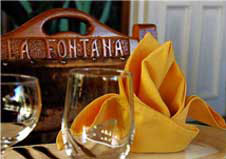Exquisiteness of the Cuban Creole Kitchen
By: Ángela Oramas Camero | Source: CUBARTE | 06 de August 2009
Many Cubans feel a great pleasure while cooking, especially when doing those delicious dishes their mothers used to prepare for them during childhood. This is a topic I was happy to include in the book Exquisiteness of Cuban Creole Kitchen (in Spanish, Delicias de la Cocina Criolla).
Since the Spanish Conquest, which took place at the beginning of the XVIth Century, Cubans began to elaborate their own dishes, which have distinguished them over other nations´ dishes, enriched with the Spanish multiregional legacy, above all, those coming from Southern Spain, where during several centuries the Islamic customs prevailed; as well as the influence of the multinational African Continent.
To this were added, later on, the contributions made by hundreds of Chinese settlers brought to the Cuban Archipelago, as well as those exquisiteness of the French Cuisine, the dishes prepared by yucatecos (those aborigines inhabiting the Peninsula of Yucatan), Haitians, Jamaicans, Italians, Arabs, Jews, among other regions.
When the Spanish arrived, Cuba was inhabited by the aborigines, or the so-called Indians (Cuban aborigines).
The first inhabitants worked in the agricultural field. Their food was based on cassava, maize (corn), sweet potato, different kinds of beens, and Cuban fruits and roots such as: squash, guava, avocado, papaya, pineapple, cashew and mamey (1).
Furthermore, they counted with an abundant fauna, that was based on quelonios (2) (chelonia), molluscs, crustaceans, fish, reptiles and birds.
When the Cuban aborigines were exterminated, the Spanish influence became the most important in the creation of a culinary culture for the Cuban territory, which was, at the same time, being enriched by the African kitchen.
So the cassava -cassava bread, known as casabe, to the tainos (3)- was substituted by the European wheat bread, and the beans cultivated in American soil where substituted by the chickpeas and lentils, so loved by the Peninsular settlers.
From Europe came the cows, the horses and the pigs, which gave an extraordinary turn around to the delicious Cuban kitchen.
Perhaps, most of the Cubans don´t know that the ajiaco (4) became the main dish of Havana´s population, some time after it was created, in the year 1519.
Still that thick, aromatic and well-seasoned soup is one of the favorite dishes among Cubans, being prepared with a big quantity of tubers and meat -above all, pork.
It has become a symbol of identity for the Cuban nation, because of the big variety of its ingredients that mixed up in it, representing the mestizaje (mixture of races) of the Cuban Archipelago.
But the creole kitchen, later on, Cuban kitchen, like at the beginning of the XIXth Century when it sprung, was and will always be opened to new contributions belonging to other cultures, as well as to the popular imagination and the belief that says that each cook has its own little book.
It is also said that love begins with the kitchen.
We will be back to this topic sooner, to which we´ll add other curiosidades and Cuban creole dishes.
We´d like to finish our article by giving you the receipe of the popular Cuban ajiaco, so different to that of the caldosa, though some think that it is the same brood, but prepared by different cooks.
Ajiaco
We use a deep casserole, with its lid off, and put it on carbon or firewood, following the old custom of the peasants.
It could also be done taking into account the modern equipments using, for this a pressure cooker or an electric cooker.
The name of ajiaco comes from pepper, since it was originally the main ingredient of the soup made those Africans brought to the Antilles as slaves.
Though being a little exaggerated, some assure that these slaves used such a spicy pepper that it could even burn a silver spoon.
Ingredients for the ajiaco (for 8 rations)
1 pound of Pork meat
½ pound of cured horse meat
¼ of chicken
(These meats could be substituted by a Pork head)
1 pound of beef
10 litters of water
1 pound of cassava or mandioc
2 fresh corn cobs
1 pound of malanga (Xanthosoma)
1 pound of name (Cocoyan)
6 plantains (two green ones, two in the process of ripening and two completely riped)
1 pound of sweet potato
1 chayote (vegetable pear)
4 medium potatoes
1 pound of squash
4 tomatoes
1 big pepper (a whole green pepper)
2 onions or elephant garlic (ajo puerro)
3 teeth of garlic
2 sour citrus or 2 lemons (in juice)
1 cup of tomato pure
2 salt spoons
3 fats spoons
Pinches of different seasonings to each person´s like, such as cumin, one bay leaf and one oregano leaf.
Preparation:
We pour the cured horse meat, already cut into pieces, into a casserole with much water. (The cured horse meat should be previously remained, for several hours, in water, so we could remove the salt from it; then we throw out this water).
Once the cured horse meat is already softened, we add the pork meat, the beef and the chicken and let them boil for an hour.
We poured the tubers already cut into pieces and following this order: first, the corn, then the cassava, the xanthosoma, the vegetable pear and the cocoyan.
Half an hour later, we add the other tubers, plus the seasonings and salt.
Everything is cooked over low heat, trying not to finish with all the water.
Then, we make the soup thick, by crushing some pieces of xanthosoma, potato and squash.
The ajiaco is ready to be served. Bon Appetit!
Footnotes:
(1). Mamey, a fruit originally from the Caribbean and Mexico. There are different types, with different scientific names, depending on the region. For example, in Mexico, it is called Pouteria Sapota; in Santo Domingo, Mammea Americana, etc.
(2). Quelonios, kind of turtle of the order Testudines (the crown group of the super order Chelonia), characterized by a special bony or cartilaginous shell developed from their ribs, which acts as a shield.
(3). The tainos were Pre-Columbian inhabitants of the Bahamas, Greater Antilles, and the Northern Lesser Antilles. They were very experienced in Agriculture and lived a mainly agrarian lifestyle, but also fished and hunted. They sometimes wore gold jewelry, paint and/or shells.
(4). Ajiaco is originally from the taino Cuban aborigines. It may contains chicken, pork meat, beef, large chunks of corn on the cob -which gives a particular yellow color to the soup-, besides sweet potato, cassava, squash, an many other tubers.
Translation: Roxana Marquez Herrera (Cubarte)























